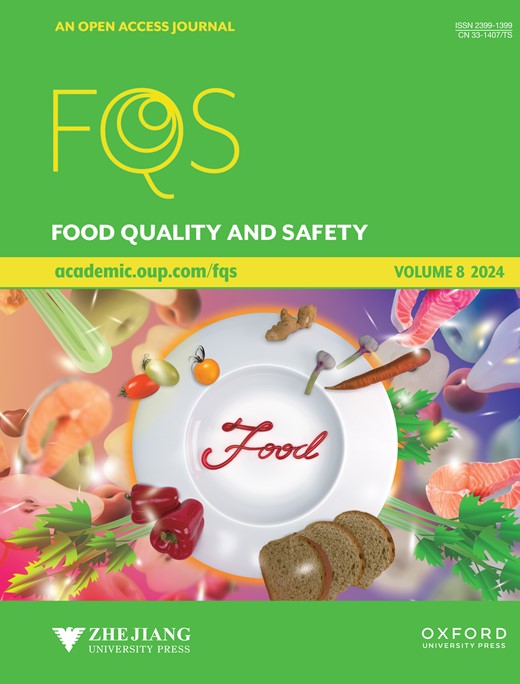Temporal-spatial analysis of cyromazine in cowpea using liquid chromatography-mass spectrometry coupled with mass spectrometry imaging
IF 4.4
3区 农林科学
Q2 FOOD SCIENCE & TECHNOLOGY
引用次数: 0
Abstract
Cowpea (Vigna unguiculata L. Walp.) is an economically important crop. It is nutritious and popular with consumers. However, it has been listed as one of the agricultural products of critical concern about safety in China and cyromazine is the major risk factor. This study analyzed the dissipation and permeation kinetics of cyromazine residue in cowpea, to offer a scientific basis for the rational use of pesticide and ensuring the safety of agricultural products. Investigated the dissipation and residue level of the systemic insecticide cyromazine on cowpea under field and stored conditions. Subsequently, studied the spatial distribution of cyromazine using MSI to visualize the dynamic processes of permeation and migration in the tissues post pesticide application. The dissipation processing of cyromazine in cowpea was shown to follow the first-order kinetics and half-life was 7.76 days in the field. In cowpea, the permeation and migration rate of cyromazine was quite faster than that in the kidney beans and accumulation mainly in the pulp. It is not safe to apply cyromazine to cowpeas with reference to the application method on kidney beans. These findings present vital data for the determination of risks linked with cowpea consumption and pesticide intake.液相色谱-质谱联用-质谱成像技术分析豇豆中氯丙嗪的时空分布
豇豆(Vigna unguiculata L. Walp.)是重要的经济作物。它营养丰富,深受消费者欢迎。然而,在中国,它已被列为严重安全问题农产品之一,而环丙嗪是主要的危险因素。本研究分析了豇豆中氰嗪残留的耗散和渗透动力学,为合理使用农药和保证农产品安全提供科学依据。研究了系统杀虫剂氯氰嗪在豇豆上田间和贮藏条件下的耗散和残留情况。随后,利用MSI技术研究了氯胺嘧啶在施用农药后的空间分布,可视化了其在组织中渗透和迁移的动态过程。在豇豆中,胞嘧啶的耗散过程符合一级动力学,田间半衰期为7.76 d。在豇豆中,氯丙嗪的渗透和迁移速度明显快于芸豆,且主要积聚在果肉中。参照芸豆的施用方法,在豇豆上施用氯丙嗪不安全。这些发现为确定豇豆消费和农药摄入之间的风险提供了重要数据。
本文章由计算机程序翻译,如有差异,请以英文原文为准。
求助全文
约1分钟内获得全文
求助全文
来源期刊

Food Quality and Safety
FOOD SCIENCE & TECHNOLOGY-
CiteScore
7.20
自引率
1.80%
发文量
31
审稿时长
5 weeks
期刊介绍:
Food quality and safety are the main targets of investigation in food production. Therefore, reliable paths to detect, identify, quantify, characterize and monitor quality and safety issues occurring in food are of great interest.
Food Quality and Safety is an open access, international, peer-reviewed journal providing a platform to highlight emerging and innovative science and technology in the agro-food field, publishing up-to-date research in the areas of food quality and safety, food nutrition and human health. It promotes food and health equity which will consequently promote public health and combat diseases.
The journal is an effective channel of communication between food scientists, nutritionists, public health professionals, food producers, food marketers, policy makers, governmental and non-governmental agencies, and others concerned with the food safety, nutrition and public health dimensions.
The journal accepts original research articles, review papers, technical reports, case studies, conference reports, and book reviews articles.
 求助内容:
求助内容: 应助结果提醒方式:
应助结果提醒方式:


